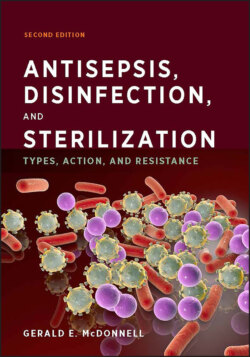Читать книгу Antisepsis, Disinfection, and Sterilization - Gerald E. McDonnell - Страница 20
1.3.3.3 ALGAE
ОглавлениеAlgae are a diverse group that can be found as single, free-living cells, but also as colonies, including multicellular filaments. Algae are phototrophs and therefore derive their energy by photosynthesis (light-mediated energy biosynthesis). Photosynthesis is conducted within special cytoplasmic organelles (chloroplasts), which contain light-sensitive pigments known as chlorophylls. Some bacteria and plants also use photosynthesis. The major habitats of algae are in water (marine or freshwater), and they are commonly encountered as colorful slimes on the water surface and, in particular, on polluted water. Examples are chlorophyta (“green algae,” e.g., Chlamydomonas), rhodophyta (“red algae”), and dinoflagellata (e.g., Gonyaulax). Some species produce toxins, which can be lethal to fish and other marine life, as well as causing mild effects (headaches and respiratory problems) in humans. Structurally, algae are typical eukaryotes. Their cell wall structures vary considerably, including cellulose-, chitin-, and silica-based structures modified by polysaccharides and peptides.
